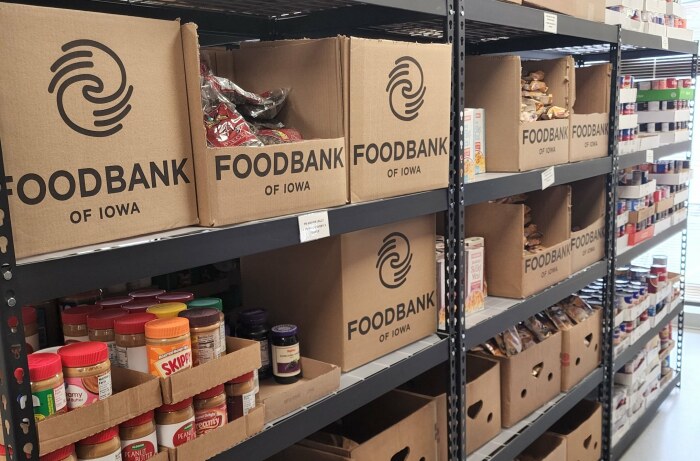Iowans who qualify for federal food assistance received $141 million less in benefits from April through August, due to Governor Kim Reynolds’ action earlier in the year, according to data the Iowa Hunger Coalition released on October 12.
After Reynolds ended the state’s public health emergency related to the COVID-19 pandemic, Iowans lost access to the emergency allotments in the Supplemental Nutrition Assistance Program (SNAP), formerly known as food stamps. The Iowa Hunger Coalition calculated that the total amount Iowans received through SNAP dropped by 43 percent from March to April.
Without the emergency allotments, the coalition reported, “On average, households have been receiving $200 less in benefits every month. The average SNAP benefit per meal for individuals in Iowa was $1.56 in August 2022.”
The federal government entirely funds the SNAP program, so the state of Iowa saved no money by depriving food-insecure Iowans of extra benefits.
On the contrary: the U.S. Department of Agriculture’s Economic Research Service has calculated that each $1 issued in SNAP benefits generates $1.54 in economic impact. (When people in need receive more food assistance, they can spend more of their limited resources on other goods and services in their community.) So the $141 million Iowans did not receive from April through August could have increased Iowa’s gross domestic product by $217 million.
The Iowa Hunger Coalition’s news release noted that as of August 22, Iowa’s SNAP enrollment was 278,514, the lowest level “in nearly 14 years.”
Coalition chair Luke Elzinga commented, “Hunger is a policy choice, and I can’t think of a more clear example that illustrates this.”
A map Elzinga created shows 33 states—including Republican-controlled Texas, Utah, Oklahoma, Alabama, Ohio, and South Carolina—are still allowing residents to receive the emergency allotments the USDA Food and Nutrition Service made available early in the pandemic. The other seventeen states, including Iowa, ended their public health emergency proclamations in 2021 or the first half of 2022, so their residents can no longer obtain the extra SNAP benefits.
The difference is stark. One recipient, Tara Kramer of Des Moines, said she is receiving just $23 a month in SNAP benefits, but would receive $281 if Iowans still had access to the emergency allotments. She now visits food pantries “multiple times a week.”
After Reynolds ended the public health emergency, food pantry leaders predicted that demand (already at historically high levels) would increase. Indeed, Elzinga observed, “Not only has the loss in SNAP benefits harmed the physical and mental health of people experiencing hunger and food insecurity, it has put a tremendous strain on anti-hunger organizations who are breaking records to make sure Iowans stay fed.” Food pantry leaders in Coralville, Johnston, and Linn County described an influx in Iowans needing help and continual trouble keeping shelves stocked.
Reynolds and other Republican politicians are quick to blame the Biden administration and Democratic-controlled Congress for rising gas and food prices, which are straining many family budgets. Iowa’s governor could have lessened the burden on hundreds of thousands of her constituents, had she not cut them off from extra federal food assistance.
The governor’s spokesperson Alex Murphy did not respond to Bleeding Heartland’s inquiry about the loss of SNAP benefits and declining enrollment in the program during a time of great need.
The Iowa Hunger Coalition created a spreadsheet (.xlsx file) to show how the SNAP benefit losses broke down by county and by Congressional district. As a whole, Iowans living in the new first district would have received an additional $35.8 million from April through August, if the emergency allotments were still in place. Numbers for the other districts: $34.1 million for IA-02 residents, $38.2 million for those in IA-03, and $32.5 million for IA-04.
Top image of food pantry originally published on the Food Bank of Iowa’s Facebook page on September 22.

